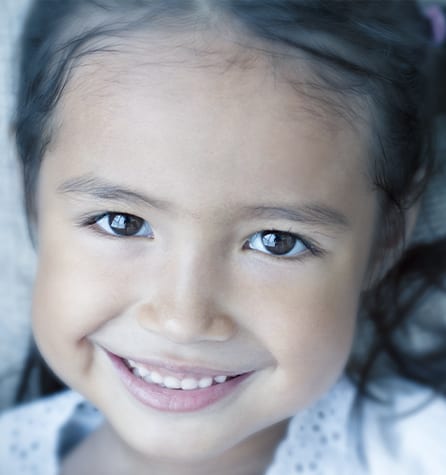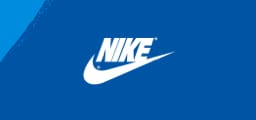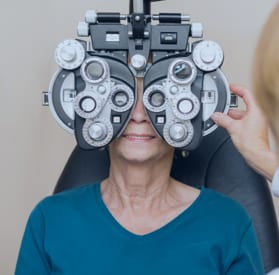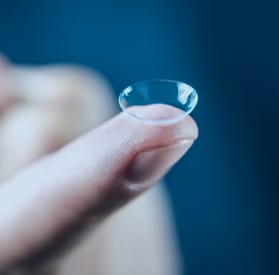Vision Care for Our Youngest Patients
You know your child’s eyesight is important, and you want them to have strong, healthy eyes. But do you know just how important your child’s eyes are to their overall growth and development?
Your baby has to learn how to use their eyes and process the visual information they send to their brain to interpret the world around them. They’ll also develop vital visual skills they’ll need for reading and writing.
Undiagnosed vision problems can lead to developmental delays, so routine pediatric eye exams are crucial for protecting your child’s eyes and ensuring they’re developing accordingly. At Lemon Grove Optometry, we use cutting-edge, safe, and non-invasive technology to check your child’s visual skills, eye movements, refraction, and overall eye health. We’re dedicated to providing you and your child with thorough vision care, so please call us today to book a pediatric eye exam!
When Does My Child Need an Eye Exam?
We follow the recommendations of the American Optometric Association when it comes to eye exam frequency. However, every patient is different. Our eye care team can recommend a schedule based on your child’s unique needs during their appointment.
Ultimately, we’ll ask that you bring your child in for a comprehensive eye exam based on their major visual milestones.
1 to 3 Years Old
Even if there’s no sign of a vision problem, your child should undergo a comprehensive eye exam by the time they’re 1 year old.
During this exam, their optometrist will check your child’s eyes for signs of nearsightedness, farsightedness, and astigmatism, as well as eye alignment and movement.
Your child’s optometrist will also check their overall eye health. The earlier eye conditions and diseases are diagnosed, the better chance treatment has for success.
Preschool
As your baby becomes a toddler, they’ll fine-tune the visual skills they started developing in infancy.
Because vision problems like amblyopia (lazy eye) and strabismus (crossed eyes) commonly develop around this time, it’s recommended you bring your child for a comprehensive eye exam between the ages of 3 and 5.
Your child’s optometrist will check their eyes for refractive errors, vision problems, and eye diseases.
School-Age
Once your child enters school, they will rely on their vision more and more as they grow. Your child’s ability to learn depends heavily on their eyes, so strong, healthy vision is key.
To ensure your child’s eyes remain healthy and make sure they get the vision correction they need, your child should undergo an eye exam every year while in school. If your child has an undiagnosed vision problem, they may struggle with school and fall behind their peers.
Your child may not even know they have a vision problem and may think the way they see is like everyone else. Regular eye exams will help catch problems your child is unaware of.


Common Pediatric Eye Conditions
Amblyopia (Lazy Eye)
Amblyopia is the clinical name for lazy eye, which can’t be corrected with glasses or contacts.
Lazy eye is often associated with crossed eyes or a large difference between the prescription of each eye. It occurs when vision develops poorly in one eye, and the brain fails to recognize signals from that eye.
Amblyopia won’t go away on its own. Early diagnosis and consistent, timely treatment are essential for increasing the chances of improving amblyopia. A lazy eye can be easily diagnosed during an eye exam and as early as 6 months or 3 years.
Strabismus (Crossed-Eyes)
Strabismus is the clinical name for crossed-eyes. It occurs when there’s poor muscle control that causes eye misalignment, making the eyes look in different directions at the same time.
When the eyes look in different directions, they send different images to the brain. But the brain needs the eyes to move together to receive strong visual information. A child with crossed eyes may see double, have poor depth perception, and develop low vision in the turned eye.
Over time, the brain will start to ignore visual information from the turned eye, which can lead to permanent vision loss.
Strabismus doesn’t go away on its own. The good news is that treatments are usually very successful if strabismus is diagnosed early. Crossed-eyes can be easily diagnosed during a routine pediatric eye exam.
Conjunctivitis (Pink Eye)
Conjunctivitis is the clinical name for pink eye. It occurs when the conjunctiva, the transparent tissue that covers the eyes and inner eyelids, becomes inflamed.
Conjunctivitis is common among children, especially those in school or daycare. There are several causes of conjunctivitis, but in children, the 3 most common types are:
Bacterial and viral conjunctivitis are both infections of the conjunctiva and are highly contagious. These forms of pink eye can spread quickly, so if your child has signs of this condition, you should take them to see an optometrist immediately.
Book a Children’s Eye Exam Today
At Lemon Grove Optometry, our passionate and caring eye care team knows just how to make your child’s eye appointments fun and comfortable. We use advanced technology that gives us the best views of your child’s eyes so you can feel confident that our eye exams are comprehensive and thorough. Call us today to book a children’s eye exam at our beautiful Lemon Grove location!
Come See What We’re All About
Want to see what we’re all about?
We are located on Broadway in Lemon Grove across the street from Miss Donuts and a couple doors east of El Pollo Grill.
Where to park?
Parking is available in the large lot in front of our practice, which also has many accessible parking spots!
Our Address
- 7850 Broadway
- Lemon Grove, CA 91945
Contact Information
- Phone: 619.697.2020
- Email: [email protected]
Hours of Operation
- Monday: 9:00 AM – 5:00 PM
- Tuesday: 8:00 AM – 5:00 PM
- Wednesday: 8:00 AM – 5:00 PM
- Thursday: 8:00 AM – 5:00 PM
- Friday: 9:00 AM – 5:00 PM
- Saturday: Closed
- Sunday: Closed
Tuesday to Friday – closed for lunch from 12 to 1
Our Brands












